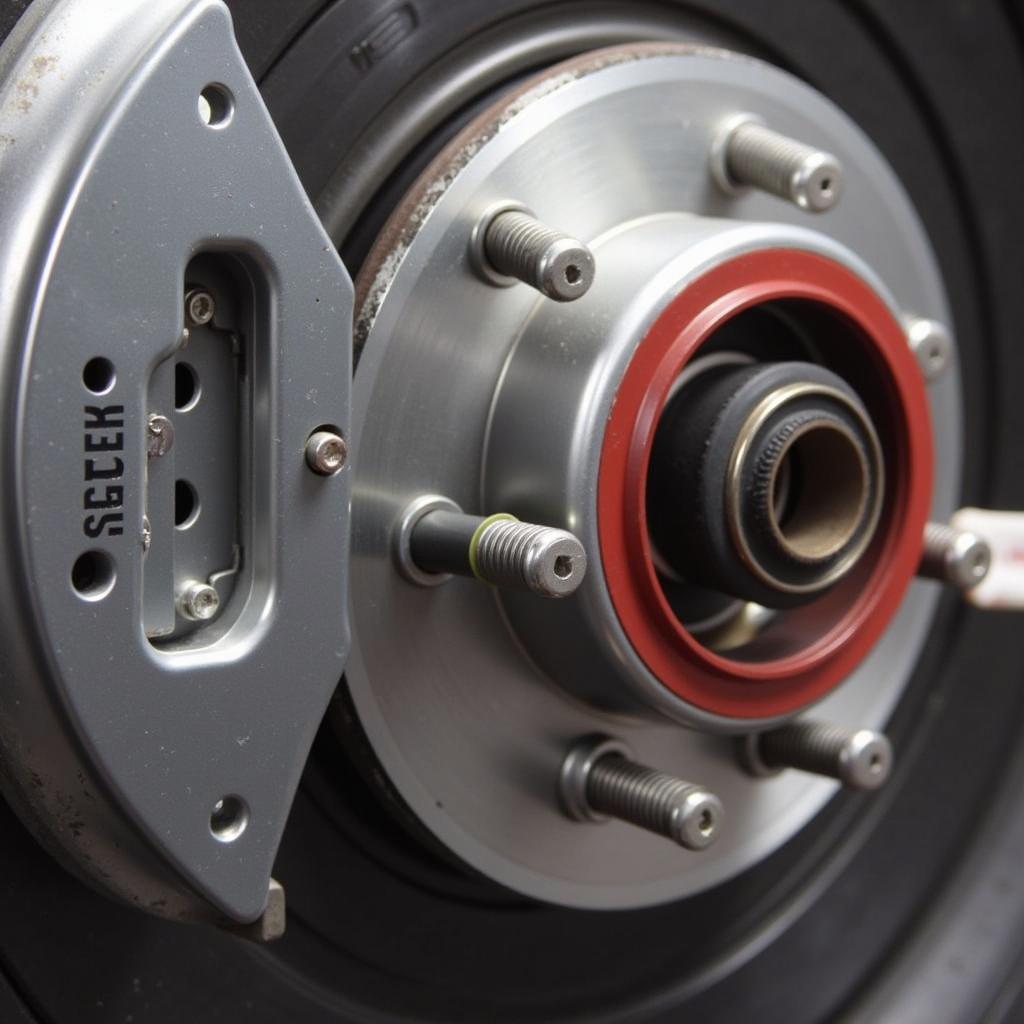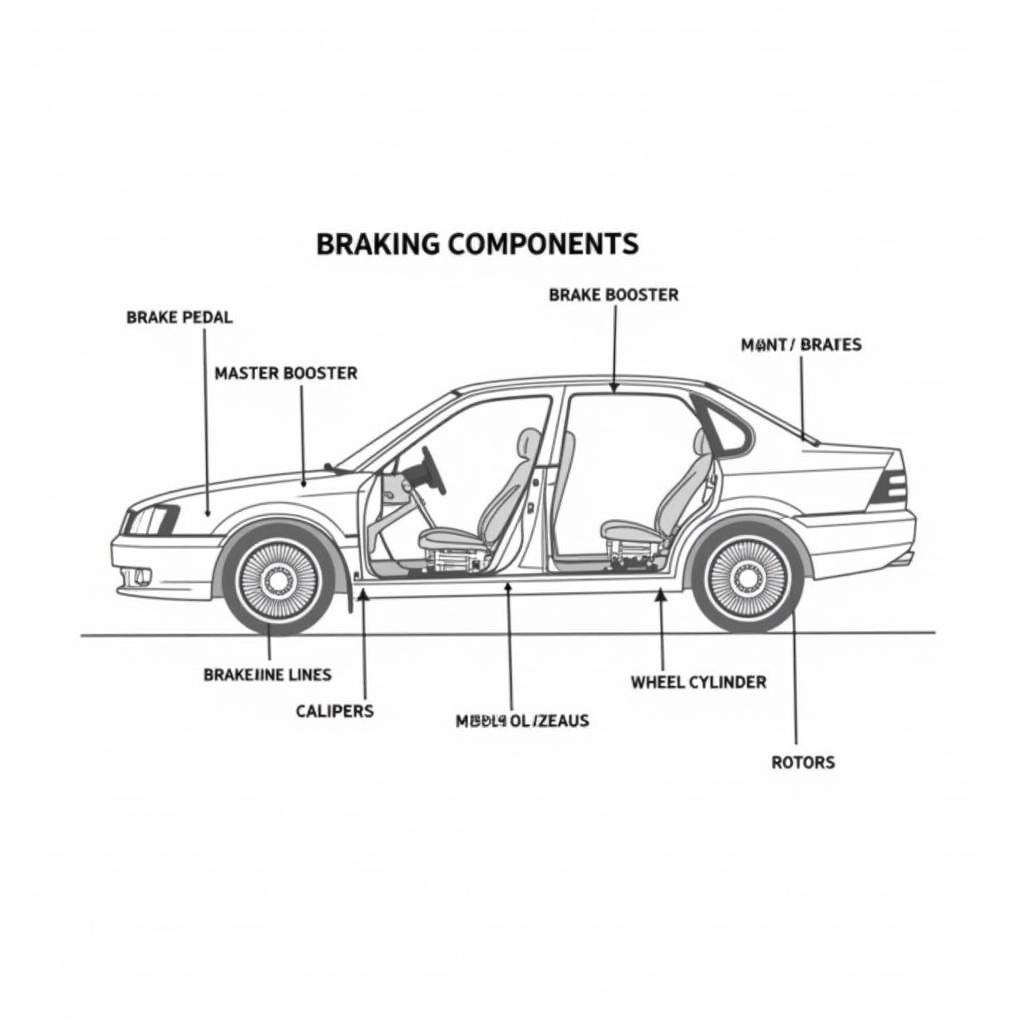The brake warning light on your 2012 Chrysler Town and Country dashboard is more than just an indicator—it’s a vital safety signal. Ignoring it could lead to potentially dangerous driving situations. This comprehensive guide delves into the common causes of this warning light, how to diagnose the problem, and the potential solutions for a safe and smooth driving experience.
Understanding the Brake Warning Light
This light serves as your vehicle’s primary communication tool for brake-related issues. When it illuminates, it’s a clear indication that one or more components within your braking system require attention. Let’s explore the most frequent culprits behind a lit brake warning light in your 2012 Chrysler Town and Country.
Common Causes of a 2012 Chrysler Town and Country Brake Warning Light
-
Low Brake Fluid Level: This is the most common culprit. Brake fluid is the lifeblood of your braking system, transmitting the force from your foot to the brake pads. A leak in the system can lead to a drop in fluid level, triggering the warning light.
-
Worn Brake Pads: Brake pads are designed to wear down over time. As they thin out, the brake caliper piston extends further to compensate, eventually triggering the brake pad wear sensor. This sensor, connected to the warning light circuit, illuminates the dashboard light, signaling the need for brake pad replacement.
-
Faulty Brake Sensor: Like any electrical component, the brake pad wear sensor itself can malfunction. A short circuit or broken wire can cause a false positive, illuminating the warning light even if the brake pads are in good condition.
 Close-up of a brake pad wear sensor
Close-up of a brake pad wear sensor -
ABS Issues: Your Chrysler Town and Country is equipped with an Anti-lock Braking System (ABS) designed to prevent wheel lock-up during braking. A malfunction within the ABS module, wheel speed sensors, or related wiring can trigger the brake warning light.
-
Parking Brake Engaged: While seemingly obvious, accidentally leaving the parking brake partially engaged is a common oversight that can illuminate the warning light.
Diagnosing the Problem
While a low brake fluid level is the most common cause, it’s crucial to approach the issue systematically:
-
Check Brake Fluid Level: With the engine off, locate the brake fluid reservoir under the hood. The reservoir will have clear markings for minimum and maximum levels. If the fluid level is low, add the recommended brake fluid type specified in your owner’s manual.
-
Inspect Brake Pads: If the brake fluid level appears normal, visually inspect the brake pads through the wheel spokes. Look for excessive wear or if the pad material is close to the metal backing plate.
-
Seek Professional Diagnostics: If the brake fluid level and brake pads appear adequate, it’s advisable to consult a qualified mechanic. They have the expertise and diagnostic tools to pinpoint the exact cause of the warning light, whether it’s a faulty sensor, ABS issue, or a more complex electrical problem.
Addressing the Issue
-
Replenishing Brake Fluid: If the brake fluid level is low, address any potential leaks before simply adding more fluid. Leaks can occur in the brake lines, calipers, or master cylinder, and require professional repair.
-
Brake Pad Replacement: Worn brake pads necessitate replacement to maintain optimal braking performance and safety.
-
Sensor or ABS Repair: Addressing faulty sensors or ABS issues often involves specialized diagnostic equipment and expertise, making it a task best handled by a qualified mechanic.
Expert Insight: “Regular brake system inspections are crucial for identifying potential issues before they escalate into costly repairs or safety hazards,” says John Miller, a seasoned automotive technician with over 20 years of experience. “A simple brake fluid flush and inspection every 30,000 miles can significantly extend the life of your braking system.”
Importance of Prompt Action
Ignoring a lit brake warning light can have serious consequences. Driving with compromised brakes puts you, your passengers, and other road users at risk. Additionally, delaying repairs can lead to more extensive damage and significantly higher repair costs in the long run.
FAQs
Q: Can I drive my Chrysler Town and Country with the brake warning light on?
A: While you might be able to drive for a short distance, it’s highly discouraged. The illuminated warning light indicates a potential problem with your braking system, compromising your safety.
Q: How much does it cost to fix a brake warning light on a 2012 Chrysler Town and Country?
A: The cost can vary widely depending on the underlying cause. A simple brake fluid top-up might cost a few dollars, while a complete brake system overhaul could cost several hundred dollars or more.
Q: How often should I get my brakes inspected?
A: It’s generally recommended to have your brakes inspected at least once a year or every 12,000 miles, whichever comes first.
Conclusion
A glowing brake warning light on your 2012 Chrysler Town and Country is not a problem to ignore. Understanding its potential causes and taking prompt action is crucial for maintaining the safety and reliability of your vehicle. If in doubt, seek the expertise of a qualified mechanic for a comprehensive diagnosis and repair. Your safety and peace of mind are paramount.

